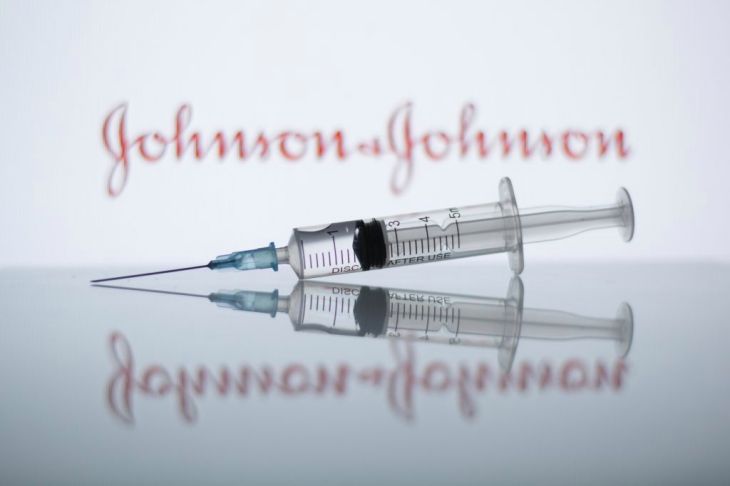The COVID-19 vaccine race is a marathon, not a sprint.
Like all new product releases in the private market, the first to market is often not the one who wins the market.
We praise Dr. Jonas Salk today as a folk hero, as the Polio vaccine remains a testament to American ingenuity. But we forget the many issues that came after the vaccine was offered to the public.
We forget the batches of vaccines that led to numerous deaths.
We forget the cold war between Dr. Salk’s vaccine which consisted of multiple injections, and Dr. Sabin’s alternative single-use, oral vaccine.
We forget that we initially opted for Dr. Salk’s injection-based vaccine because it was developed faster, but eventually opted for the oral vaccine because it was easier to administer, and proven safer.
Yet in our quest for expediency, we forget the importance of patience. Google was not the first search engine to hit the market. But it had a unique business model that eventually captured the market.
The Johnson & Johnson (J&J) vaccine is a single dose vaccine that – at least according to the preliminary data available – is less effective compared to the Pfizer and Moderna vaccine among the general population.
Whether that gap is because J&J’s study included the South African variant of COVID-19, or whether the vaccine is truly less effective, is not the point.
The point is that the J&J vaccine is perceived to be less effective than the other vaccines on the market.
Yet people are still calling it a game changer. But not because the J&J vaccine is single dose compared to the other double dose vaccines.
It comes down to good old fashion start-up principles.
J&J realized early on that it does not matter whether a vaccine is 95% effective or 65% effective, it matters whether it gets to the patients. So the company developed a vaccine to fit within the traditional distribution channels for previous vaccines.
When J&J started its phase 3 trial in September, the company said the vaccine is “compatible with standard vaccine distribution channels and would not require new infrastructure to get it to the people who need it.”
Now that J&J is ready to enter the market, the healthcare community, weary of spoiled batches of Pfizer or Moderna vaccines arising from logistical issues that prevent those vaccines from reaching intended populations, are clamoring for a more logistically friendly solution.
We applaud stories of nurses rushing desperately to vaccinate anybody nearby to save vaccine batches from spoiling. But we know long term this is not the right approach to obtain herd immunity.
More importantly, we know this is not the right approach to prioritize vaccinations.
The first two vaccines to hit the market earlier require cold storage – in Pfizer’s and Moderna’s case – much colder. These vaccines must be kept at minus 94 degrees Fahrenheit (minus 70 degrees Celsius), and will only last for 24 hours at refrigerated temperatures between 35.6 and 46.4 degrees Fahrenheit.
Some countries and hospitals in the U.S. do not have enough ultracold storage capacity to make a large vaccination campaign feasible. Limiting availability among patient populations that are at high risk of developing COVID-19 complications. And often, the patient who are the least accessible are the ones who are the highest risk.
Though COVID-19 ravaging cities like New York and Houston makes the news cycle, the effects of pandemic on rural communities across the country are proving to be more impactful and enduring – likely for years to come.
What J&J provides is not the best solution possible, but the best market fit.
Which is why it will likely win the COVID-19 vaccine market.
We have seen time and time again in different industries, from personal computing to social media, the winner is the company that has the best understanding of the market.
Though the company does not often have the best product.
Logistical hurdles prevented Pfizer and Moderna from reaching the Trump administration’s target vaccination goals. And the ease of using preexisting distribution channels will enable J&J to capture critical market shares that the first two vaccines were not able to access.
“As with any vaccine, it’s about how you deploy it”, explains Dr. Stephen Griffin, a virologist at the University of Leeds, U.K.
The go-to-market strategy is more important than the quality of the product in many situations.
While J&J’s vaccine does pose clinically important limitations, particularly among some of the more virulent variants of COVID-19, the epidemiological community is praising its ease of availability.
The J&J vaccine offers easier logistics for patient populations that are hard to reach, including people who are homeless, use substances, or who live in rural areas.
But Pfizer and Moderna should not lose hope. As the COVID-19 virus continues to the evolve, the vaccine market will continue to evolve as well.
And future vaccines that address the logistical hurdles while providing broader, more comprehensive coverage for the different COVID-19 variants will gain favor in the coming years.
Post-pandemic, we will attempt to standardize the formulary for an annual COVID-19 vaccine the same way we have for an annual influenza vaccine.
The vaccine winner will win the balance of availability and efficacy.
By identifying the multi-factorial constraints that describe the time and labor and cost factors related to the vaccine supply chain, while developing a vaccine formulary – be it mRNA or DNA derived – that can be as effective as possible, against as many variants as possible.
Easier said than done, no doubt. But the parameters are now clearly drawn.
We know what the market responds to when adopting a vaccine. Now it remains to be seen who can optimize this balance.















